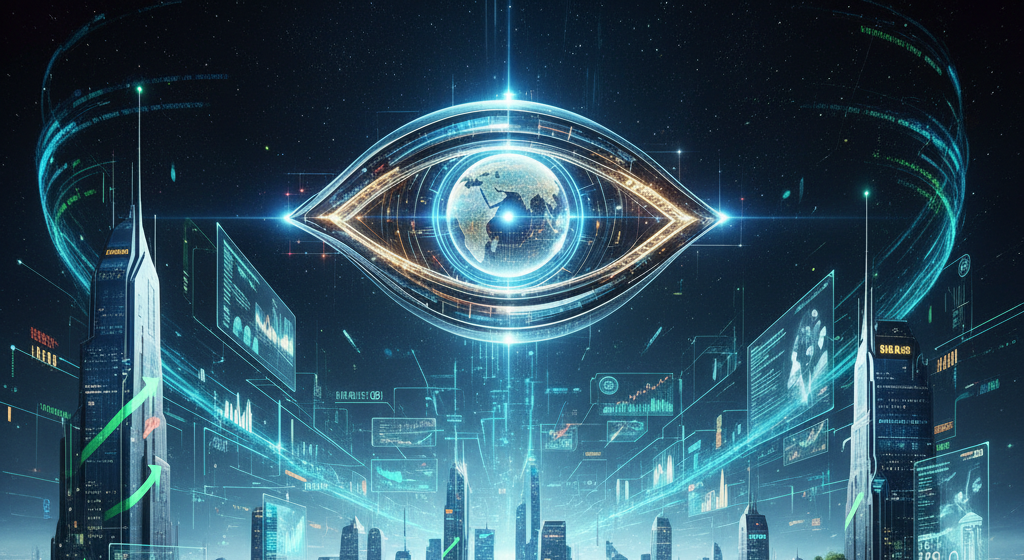The modern financial market is no longer a trading floor filled with shouting brokers and ringing phones. It’s a living, breathing ecosystem — a vast digital rainforest teeming with data, algorithms, and real-time decisions. In this dense jungle of numbers and nanoseconds, one thing sees all: Artificial Intelligence. Like an unblinking eye, AI scans, learns, and reacts faster than any human could ever hope to. And in doing so, it’s rewriting the very DNA of finance — from the skyscrapers of Wall Street to the smartphones in our pockets.
Algorithmic Trading: The Hunt for Invisible Patterns
Once upon a time, market success hinged on intuition, timing, and perhaps a touch of luck. Today, it’s all about algorithms. AI-driven trading systems now dominate global exchanges, analyzing millions of data points per second — stock prices, social sentiment, economic indicators, even weather reports — to detect patterns invisible to the human eye.
These systems don’t just react; they anticipate. Machine learning models are trained to recognize subtle correlations and fleeting micro-patterns that can signal opportunity or risk within fractions of a second. Where humans see chaos, AI finds rhythm. It’s like teaching a machine to hear the faintest melody within market noise — and then act on it instantly.
The result? Faster, smarter, and often more profitable trades. But it’s not without challenges. As AI models become more complex, transparency becomes murkier, leaving regulators and even traders wondering how decisions are made. Yet, there’s no denying it: algorithmic trading has become the financial world’s beating heart — and AI is the pulse that keeps it alive.
AI-Powered Risk Assessment: Beyond Credit Scores
Traditional lending has always relied on one-dimensional snapshots: your credit score, income bracket, or repayment history. But life — and finance — is far more nuanced than a three-digit number. Enter AI-powered risk assessment, a revolution that’s quietly redefining fairness in lending.
AI doesn’t just look at what you earn or how you’ve borrowed; it examines how you live. From spending habits and mobile payment activity to educational background and even social behaviors (in a privacy-compliant manner), AI can process thousands of variables to create a far richer financial portrait.
This means someone with limited credit history but strong behavioral indicators — like consistent bill payments or stable online purchasing patterns — may now qualify for loans once out of reach. The result is a lending landscape that’s more inclusive, more dynamic, and ultimately, more human in its understanding of risk.
AI in Fraud Detection: The Digital Immune System
If financial data is the bloodstream of the global economy, then fraud is the infection constantly threatening its health. But AI has become the industry’s digital immune system — always on, always learning, and always adapting.
Traditional fraud detection relied on predefined rules: flag this, block that. But modern financial crime evolves too quickly for static systems. AI, however, learns from every transaction, every anomaly, and every new trick in the book. It builds dynamic models that can spot subtle deviations — a misplaced decimal, an odd login time, a purchase pattern that doesn’t “fit.”
More importantly, it improves continuously. Like a biological immune system, AI gets smarter with each attack, adapting to new threats in real time. Whether it’s credit card fraud, identity theft, or cyberattacks, AI’s vigilance keeps both institutions and customers safer — often without them ever realizing it.
The Dawn of Personalized AI Advisors
So where does this all lead? Imagine an AI financial advisor that knows your goals better than any human banker — one that learns your risk appetite, spending behavior, and life milestones, and tailors investment or savings strategies uniquely for you. That future isn’t far away. In fact, it’s already being tested in fintech labs around the world.
The age of spreadsheets and static dashboards is ending. The age of living finance — responsive, adaptive, and intelligent — has begun. From Wall Street to Main Street, AI isn’t just watching the markets. It’s understanding us.

